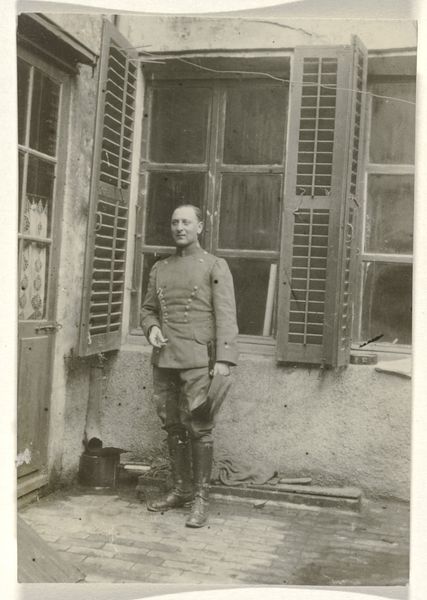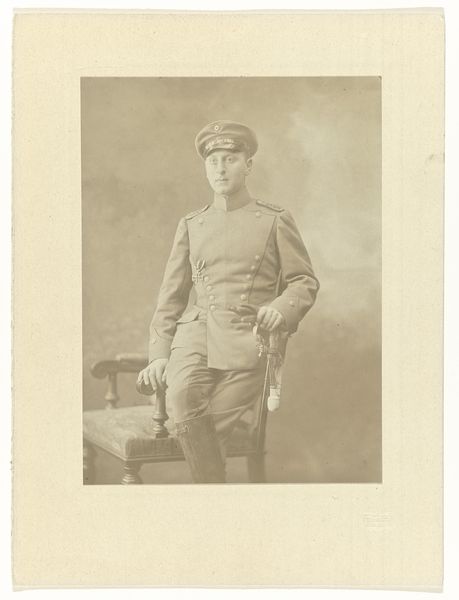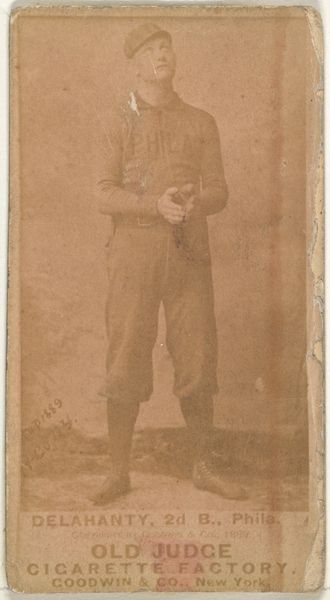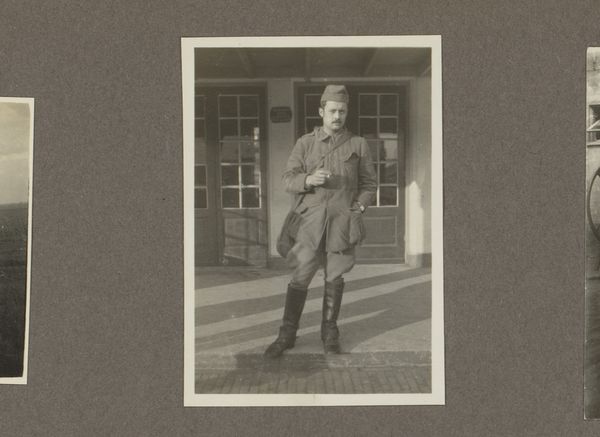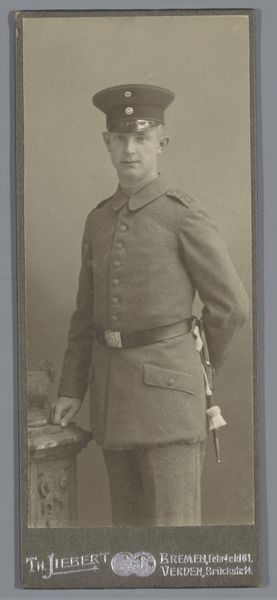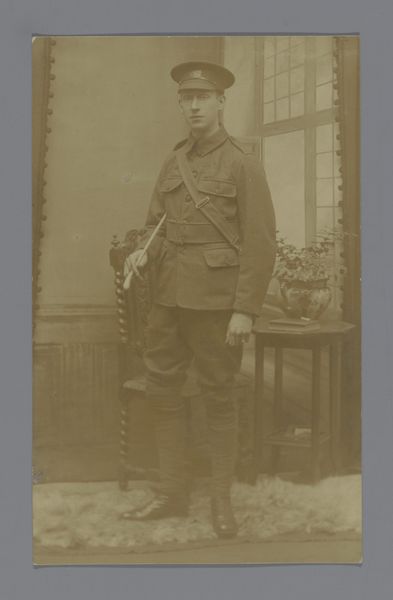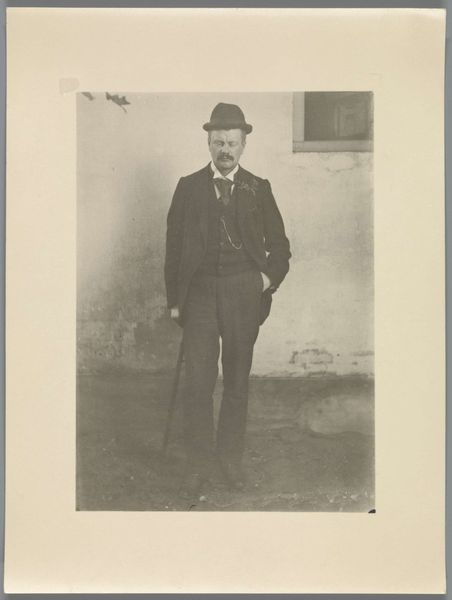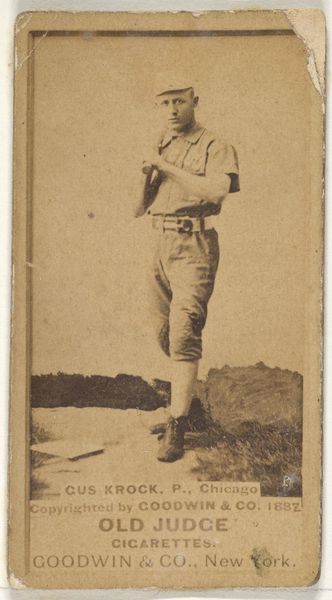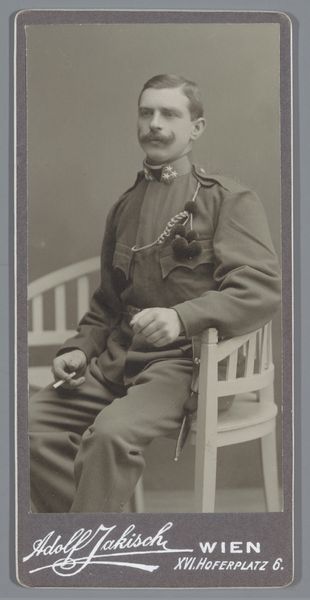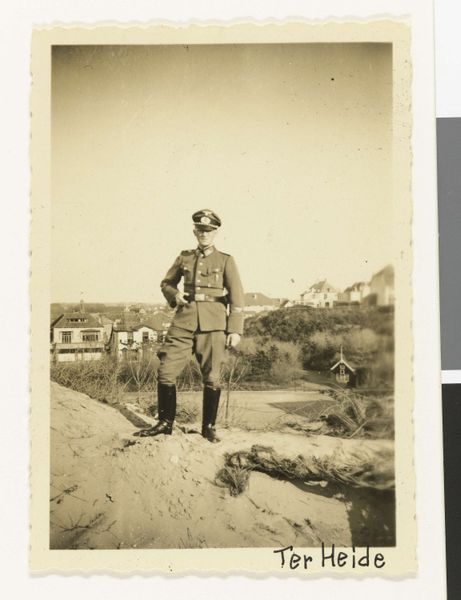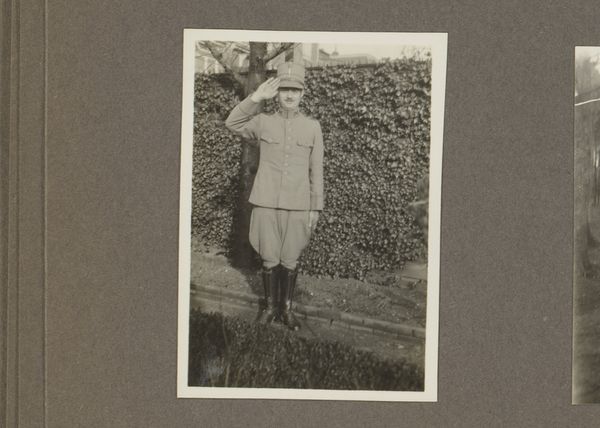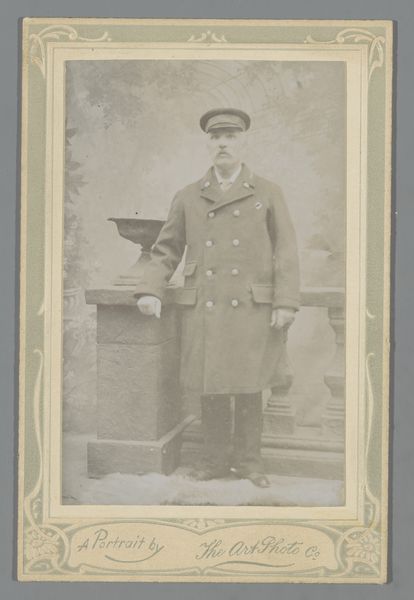
photography
#
portrait
#
archive photography
#
photography
#
historical photography
#
historical fashion
#
realism
#
monochrome
Dimensions: height 150 mm, width 100 mm
Copyright: Rijks Museum: Open Domain
Curator: Here we see a vintage portrait, most likely dating from sometime between 1925 and 1930, titled “Portret van Douwe de Vries.” The medium used here is historical photography, showcased in stark monochrome. Editor: It’s… surprisingly casual, isn’t it? Given the military dress, the monochrome and the historical period, you’d expect a more formal setting. Instead, there’s laundry hanging in the background! Curator: Exactly. Juxtapose the symbolism of the rigid military attire—an assertion of power, order, and perhaps even violence—against the domestic scene behind him, and you reveal some interesting contradictions, gender dynamics, the intersection of public and private spheres. Is he performing masculinity here, for himself, for the camera, for us, or even perhaps undermining it, juxtaposing it with quotidian laundry hanging in the background, or are those even perhaps, burial shrouds that allude to war's human cost? Editor: I'm drawn to the image's materiality. Look closely. There’s evidence of the photographic process itself, this mounting board and faded, matte surface that is more about conveying history and archiving information through time, the photo is more than a pristine image—it's an artifact that embodies the conditions of its making and initial use and is an examination of both the social role of military authority but the social impact as well. Curator: Indeed. We are forced to confront ideas around the manufacturing of photographic artifacts as material witnesses. The realism adopted as the style presents truth while inviting examination. Consider Douwe de Vries himself, we know nothing about this man save that this photograph of him has survived, he has become an intersection of power and loss. Editor: Looking at the labor that went into staging, capturing, and printing this image, reminds us of all those who went unnamed and unseen but played critical roles. I'm considering the raw materials required to render his likeness into this durable form, how photography democratized access to portraiture... Curator: Yes, we're invited to contemplate how access defines identity in ways that connect to broader historical structures, as much as, the materials speak to how history is recorded and commodified. Editor: In the end, perhaps, what’s most poignant is seeing how labor, power and mortality are recorded together. Curator: The survival of his image transforms it into an intersectional nexus, simultaneously embodying individual stories and universal themes across identity, gender, race and class in the narrative of the twentieth century.
Comments
No comments
Be the first to comment and join the conversation on the ultimate creative platform.
